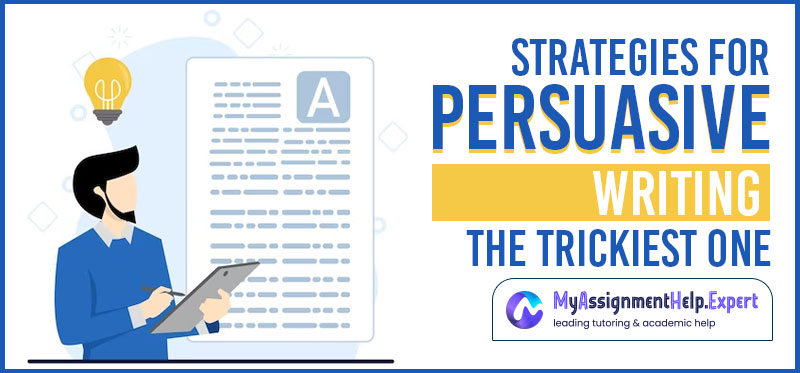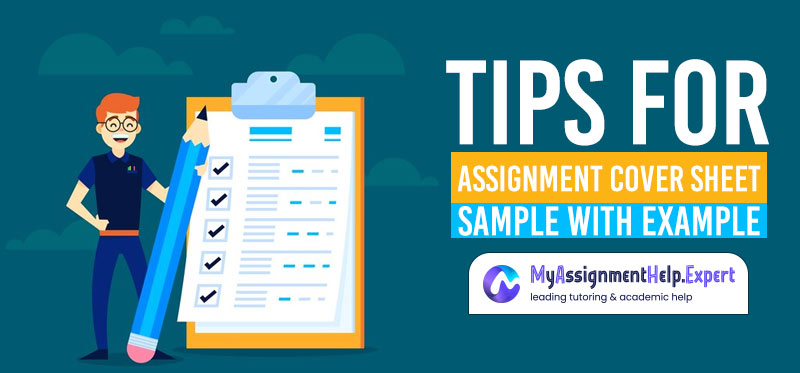Strategies For Persuasive Writing – The Trickiest One

Writing is a necessary skill in many jobs.
Throughout your career, your ability to write eloquently can benefit your CV, email communications, written proposals, and other critical papers.
Do you want to utilize persuasive techniques of writing to persuade your readers to do something or agree with you?
That was a stupid question. You, of course, do. You’re learning the craft of copywriting.
We’re all aware of how simple it is to become distracted these days, and you want your online company ideas to stick out and reach the target audience.
It would be fantastic if it happened on its own, but skilled content entrepreneurs understand that making a living online requires research, dedication, and expertise.
What Exactly Is Persuasive Writing?
In general, persuasive writing is an exercise in creating a win-win situation. You provide an argument that others find advantageous to agree with…
You provide them with an irresistible offer, but not in a manipulative manner that breaches marketing ethics.
It’s just a decent deal or a stance that makes sense to that person. However, there are tactics you can use to make your case more appealing, which will make your work easier.
What are persuasive techniques?
If you’ve ever wondered why some blogs become companies while others remain hobbies, the reason is probably that the blogger has examined persuasive writing techniques and calls to action examples.
Nothing is more discouraging than having brilliant blog post ideas that nobody reads. Learning to produce persuasive blog posts will keep readers interested in your message as well as draw readers to your content.
We’ll talk more about that when we look at some strategies for persuasive techniques in writing.
Which techniques are used to engage a reader?
You can choose which techniques for persuasive writing will work best in any given circumstance by being aware of the three main types, according to Aristotle:
- Ethos
Ethos relies on credibility as a means of persuasion. Credibility can be established in a variety of ways, such as through experience or education. The legitimacy of a psychologist’s paper on the psychology influencing anxiety and sadness would come from their experience and expertise in the subject. But if that same psychologist had written an article on cuisine, their supposed authority in that area would not be the same.
Some people believe they have credibility because of their credentials. People can create their own ethos by highlighting what makes them experts in a certain sector. Using references from reliable sources in their arguments or appealing to the audience’s rationality are other ways that people might develop their ethos.
- Pathos
Pathos is a persuasive technique that plays on people’s emotions. Humans experience a wide range of complicated emotions, and these emotions frequently override reason and logic in behaviour. Pathos is a potent technique of persuasion that enables people to relate to one another and experience emotions due to the complexity of feelings. Pathos is an extremely powerful tool for persuasion since the emotions a person feels can also inspire them to act differently or believe something to be true.
Due to its difficulty to maintain objectivity, pathos is sometimes the least respected of the major persuasion techniques. Appealing to people’s emotions may not always be the ideal strategy for a large and diverse audience because people experience different emotions depending on their life experiences.
- Logos
Using logos can assist in establishing the ethos in writing since it appeals to the rational side of the audience. When using research as your primary method of persuasion, logos is an excellent place to start. As you learn more about a subject, you may use that knowledge to convey the material to your audience more logically.
Avoiding flawed logic is a crucial component of retaining logos in rhetorical works. This circumstance, also known as a logical fallacy, might happen if you try to employ logic that isn’t correct or founded on facts. To avoid using logical fallacies, for instance:
- Making an appeal to ignorance: Taking an ignorant stance
- Ad hominem: The use of an insult to support a claim or an argument
- Strawman: Attacking an idea that the audience doesn’t share is a strawman.
- Slippery slope: Moving through potential stages from a beginning point to an improbable extreme is known as a “slippery slope.”
- Red herring: Deviating from the subject by making a pointless argument
- Appealing to authority: Use unreliable, inadequate, or irrelevant sources or relying solely on an expert’s judgement while ignoring other pieces of evidence is known as appealing to authority.
- Kairos
Aristotle also acknowledged a fourth method of persuasion, albeit he did not include it alongside the other three in his teachings. Kairos, which means appropriate or right moment in Greek, is the name of this style. The speaker or writer must seize upon or create the appropriate opportunity to make a point when using the kairos mode of persuasion.
An elected official might contact their constituents, for instance, in the wake of a local killing, in an effort to persuade them to support stricter gun restrictions. This illustration combines pathos, or appealing to emotions, with kairos, or seizing the moment.
Persuasive Writing Tips And Strategies
Use Your Words Carefully
Your word choice has a significant impact on the reader’s perception of your material. Your choice of words or phrases will either directly or indirectly affect what readers think. Through persuasive writing, you can establish a personal connection with the reader. To help the reader understand your point of view, it’s important to choose the proper words in every situation. In order to make compelling arguments, you must express the facts clearly and refrain from hedging in your writing.
Writing that is persuasive often uses emotive language. You can express your feelings with words and phrases. Your connection with the audience will be stronger and more emotional as a result. Puns, quips, and other wordplay help your reader retain information. They serve as an effective memory aid to aid readers in remembering the main elements of your main contention.
Use a strong writing format
There are various formats for persuasive texts. Each of them has a unique structure of their own. The formats determine the layout. Examples of persuasive text include letters, flyers, reviews, essays, advertisements, and brochures. One must observe these structures in use before beginning persuasive writing. You must adopt a solid writing structure in order to accomplish this.
Make sure the material is written in a consistent manner. Additionally, a standardised system of content is required. You can’t allow your material to swing back and forth between two extremes. Making a solid structure is also necessary to encourage audience participation in your material. You can use an online text editor to make your work more readable when it has a good writing structure.
Create a Map of Persuasion
The persuasion map serves as an outline for your argument and aids in the creation of a tool that helps authors organise their ideas. There are various writing techniques for persuasive essays. The most common method is to outline your key ideas, support them with facts and examples, and then summarise.
The persuasion map is ideal for those who wish to become better at organising their thoughts when writing for an audience. The persuasion map will also assist you in writing the outline so you can keep track of what should be included and what is unnecessary.
A social scenario
One of the most potent psychological impulses in our lives is the desire to seek advice from others about what to do and what to accept. It frequently affects whether or not we act in a variety of scenarios.
Testimonials and third-party recommendations are clear examples of social proof, and it is the motivation for social media. However, you can also sloppily incorporate social proof components into your writing and marketing copy. These can range from subtle alignment with outside authority to overt name-dropping.
Use a conversational tone of voice
In particular, when writing persuasively, the writer-reader interaction is crucial and critical. One of such tactics is to address the reader directly. You can speak to them personally to establish a strong connection with them.
It is unquestionably a good writing tactic if you are speaking directly to the reader. You should write in a conversational tone more often. The casual tone will entice the reader to let down their guard and thoroughly consider your arguments.
Craft a convincing thesis statement
A thesis statement will always be included whether you’re creating a research paper, an article, or a persuasive essay. It’s simple to articulate your views with the help of some useful advice for crafting a solid thesis statement. It’s crucial to write briefly so that the reader can properly understand your thesis statement.
The customer enjoys well-written and original information, so always make sure your content is both original and well-researched. You can use a free plagiarism checker or hire a proofreader if you’re worried about plagiarism and the originality of your paper. To reach a wider audience, avoid employing words that are too difficult.
Reiterate Your Principal Points
A traditional tactic in persuasive writing is the repetition of points. It aids in putting concepts into your readers’ heads. There is no denying that repetition is an effective memory help. More people reading something increases the likelihood that they will remember it. Therefore, when it comes to persuasive writing, readers’ perceptions are affected.
A concept becomes normalised if it is repeated often. It must, however, be combined with logic and strong proof. If your reasons are solid, repetition can make bold ideas appear more realistic.
Make Your Point Clearly
You have the choice to overstate the case in order to convey exclusivity and urgency. It is a powerful strategy for persuasion. Additionally, keep in mind that remarks that seem bombastic shouldn’t be interpreted literally. They are the ones that deliver a meaningful and lasting message.
If you want to convince a reader not to dine there, you may say, “Their bad service can nearly starve you to death.” Although the assertion is probably false, it nonetheless makes a strong statement and paints a clear picture of the point you are trying to make.
The phrase “The Happiest Place on Earth” from Disney could serve as a classic example of marketing. Although the statement is exaggerated, it gives the intended audience a favourable impression.
Ask various questions
The transitions between the questions and the paragraphs or topics are excellent. However, they work better in persuasive writing. The readers will try to respond automatically to questions, whether they know the answer or not.
Engaging the reader with questions is a terrific tactic if you want to write content that is persuasive. You can utilise the questions to introduce concepts to the readers’ minds before leading them directly to your point of view.
Another situation may be where, after presenting an idea with a clear framework and reasoning, you ask a question that prompts the reader to draw the conclusion that you want them to draw—the goal of any persuasive writing.
Incorporate Analytical Data
As we already stated, the secret to writing persuasively is to arouse emotions. Some members of your audience may have a preference for analytical data.
Many goods and services aren’t designed with emotional weaknesses in mind. Even while trying to arouse passion, intricate data analytics, such as facts and figures, must support the argument.
Additionally, the ideal method to accomplish this is to offer indisputable proof and position your solution as the finest choice available to your potential client. Some readers and users like analytical data, and you might capture their interest by giving them leads. They can be interested in your content as well.
Comparisons
The best companions of the persuasive writer are metaphors, similes, and analogies. You’re well on your way to persuading someone to see things your way when you can connect your scenario to something the reader already believes to be true.
But comparisons also function in different ways. You can sometimes persuade people more using the cliche but powerful metaphor of comparing apples to oranges.
For instance, while learning how to make digital products, compare the cost of your online course to that of a live seminar or your hourly consulting rate rather than the cost of another course that is identical.
Use Persuasive Images
Although not all persuasive genres demand the use of visuals, text types like advertising and persuasive brochures frequently make excellent use of images.
A reader’s attention can be drawn in and held by images and the text that goes with them. They can take on a variety of shapes, including photographs, images, infographics, diagrams, logos, etc. Visuals can assist the text’s overall persuasiveness and aid in drawing the reader’s attention to the text.
Prognosticate
Giving your readers a peek into the future is another element of persuasion. If you can persuade someone that you can extrapolate current events into expected future results, you might as well have a money-printing permit.
Credibility is the foundation of this entire plan. You’ll come to seem silly if you don’t know what you’re talking about. But if you can support your assertions with credentials or a demonstrable mastery of the subject, this is a highly powerful persuasive writing method that also fosters interpersonal trust.
Unify … selectively
Humans are exclusive by nature, despite our aspirations to be intelligent, enlightened beings. People will board any train you’re operating if you give them the option to be a part of the group they want to be a part of, whether that group is wealthy, hip, green, or even the opposite.
This strategy is used in the best sales letter ever written. Find out what group people want to be a part of, and while appearing to exclude others, extend an invitation to them to join.
Storytelling
Storytelling is actually a catch-all tactic that should be used in conjunction with any or all of the other nine techniques. However, the fundamental nature of persuasion itself is the reason why storytelling is so effective.
It all comes down to how well people can convince themselves through the use of stories. You could say that we just assist others in coming to their own independent conclusions on what is correct. You will discover that you are a terrible persuasive writer if you put all of your efforts into telling better stories.
Persuasive Writing Techniques Examples
As previously stated, persuasive essays have helped in a number of big historical events and movements frequently when society was going through a huge shift in thinking. Here are three persuasive techniques examples in writing from various eras in American history.
- Thomas Paine’s Common Sense (1776)
Not every colonial American believed that a revolt against England was a desirable idea. Thomas Paine published this 47-page pamphlet to persuade the populace that the American Revolution was a good idea and morally just.
- Susan B. Anthony et al.’s Declaration of Rights for American Women (1876)
The demands of the National Woman Suffrage Association (NWSA) were detailed in this manifesto, which was written in the Declaration of Independence manner. This printed leaflet, given out illegally at the Philadelphia Independence Day celebration commemorating the centenary of the Declaration of Independence, discussed the struggles of women and criticised gender discrimination.
- Martin Luther King, Jr.’s letter from Birmingham jail (1963)
He penned this argumentative article in reaction to criticism of the Civil Rights Movement by Southern religious leaders that had been published. At the same time, King was in prison for a peaceful protest. Although the essay clearly addressed the critics, it was also accessible to anybody curious about King’s viewpoint.
Here is the trick,
Copywriting isn’t about fabrication, fraud, or the act of trying to persuade readers. Storytelling, empathy, and reliability are key components of great copy.
It’s unlikely that you will ever be able to expand your web business without an excellent copy. It’s that crucial. To find out more and to stay up to date with contemporary content marketing, sign up below. Although it appears simple, writing convincing content is difficult. The craft must be regularly practised in order to become proficient.
A persuasive piece of content must successfully persuade the reader. It is the main metric used to assess the effectiveness of your writing. To captivate readers with your content, you must create a compelling story. If your article is purely informative, it won’t be effective.
The power of storytelling excites the imagination. Additionally, it aids in making the reader relate to the subject. As a result, you must choose a writing style that will persuade the reader to continue reading and to internalise ideas and thoughts.
Frequently Asked Questions
What is persuasive writing?
The goal of persuasive writing is to persuade the audience of a particular point of view or concept. It presents arguments backed up by data in an effort to influence readers’ viewpoints, attitudes, or behaviour towards a specific subject.
What are some common persuasive writing techniques?
To effectively engage and persuade the audience, common approaches include using emotional appeals, logical reasoning, vivid imagery, potent tales, rhetorical devices, and utilising a clear and appealing narrative framework.
How do you appeal to emotions in persuasive writing?
Writers employ strong language, meaningful experiences, and vivid descriptions to arouse emotions like empathy, excitement, fear, or compassion. Readers may be more receptive to the author’s viewpoint as a result of these emotional ties.
What role does evidence play in persuasive writing?
The foundation of persuasive writing is evidence. Arguments are more credible when data, figures, expert opinions, research, and examples support them. Strong supporting arguments support the author’s stance and aid in persuading the audience of the argument’s validity.
How do you address counterarguments in persuasive writing?
Taking on counterarguments entails recognising competing ideas and then deftly disputing them with persuasive justifications and supporting data. By doing this, authors demonstrate that they have thought about other viewpoints, which strengthens and strengthens the credibility of their own position.
What are rhetorical devices in persuasive writing?
Language tools called rhetorical devices are employed to increase the persuasiveness of writing. Metaphors, similes, alliteration, hyperbole, repetition, and rhetorical inquiries are a few examples. These techniques produce memorable and emotive language that connects with readers and strengthens the writing’s persuasiveness.






